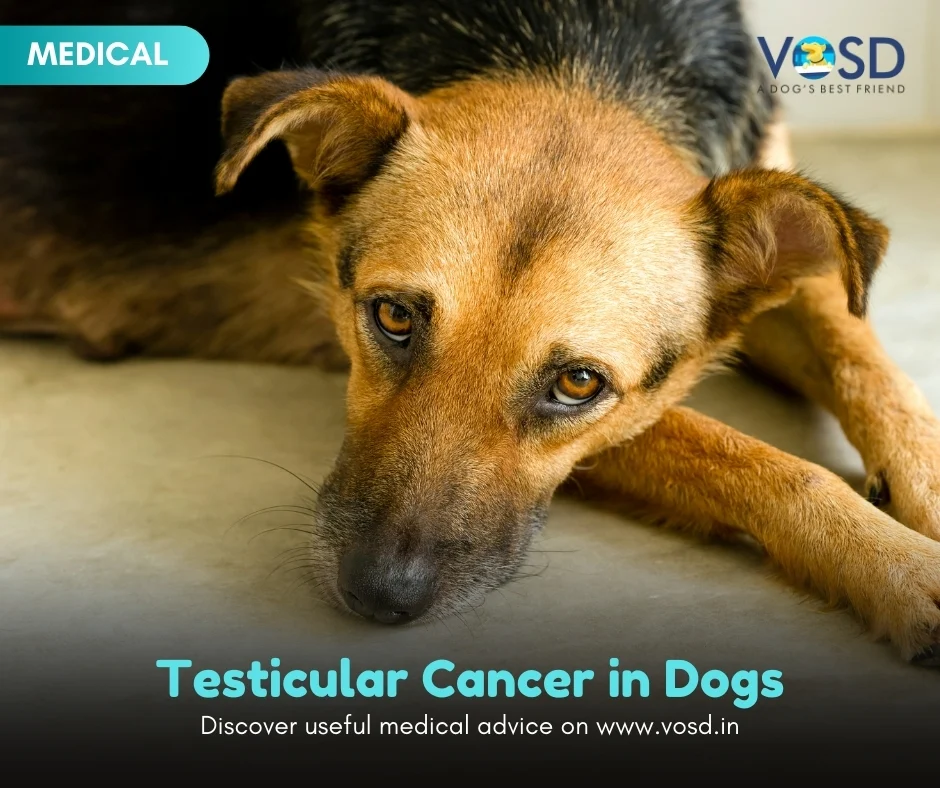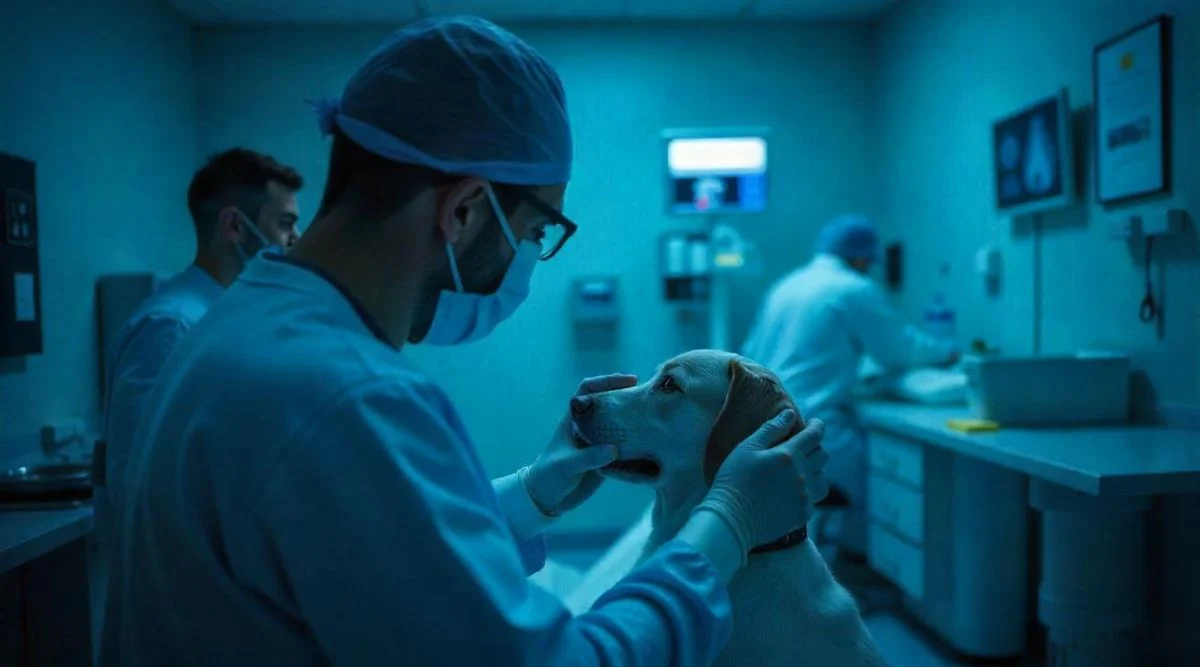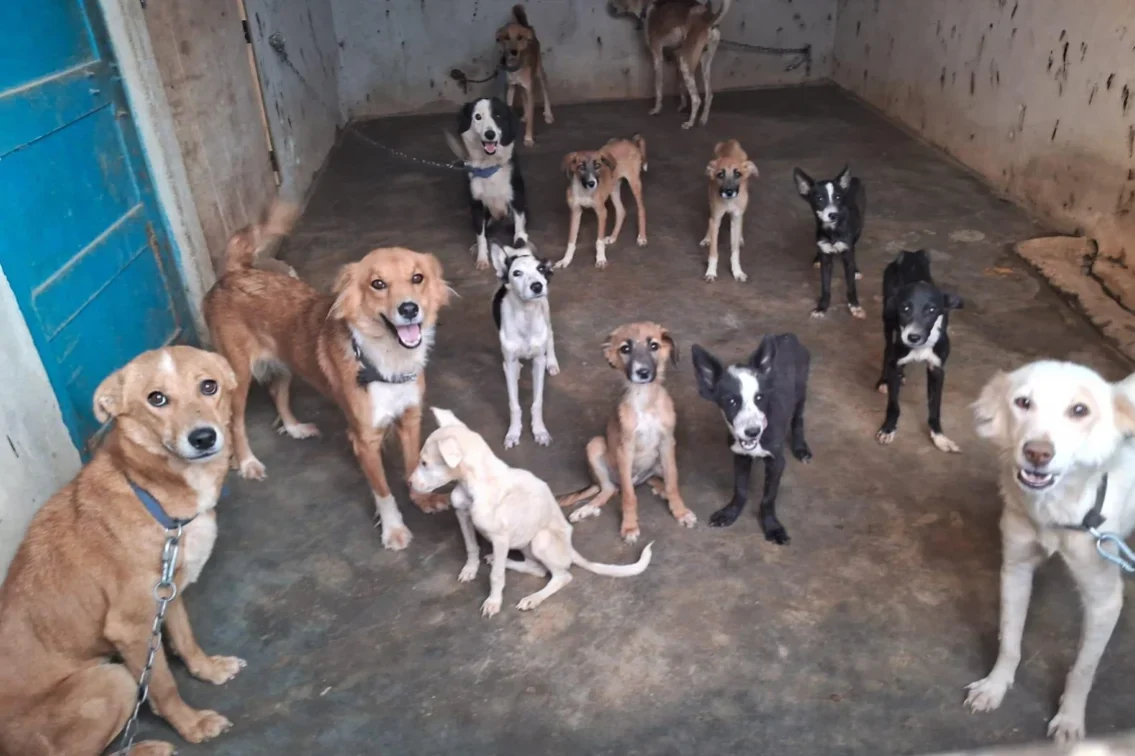One of the most common genital tumours are testicular tumours, and they are mostly malignant. They can grow in one or both testicles. Invariably, they are cancerous and will spread to other parts of the body. Fortunately, even though they are malignant, they occur in older dogs that have not been neutered, and metastasis is not very common.
The testicular tumour develops when there is an uncontrolled growth of cells in the testicles. There are three common types of testicular cancer:
- Germ cells are sperm producing cells and they cause Seminomas.
- Leydig cells are those that produce the testosterone hormone, and cause Interstitial tumours.
- Sertoli cells are those that help sperm growth and cause Sertoli cell tumours.
Some dogs have more than one kind of testicular tumours. Other types of testicular tumours include embryonal carcinoma, hemangioma, teratoma, fibroma, and chondroma. But, they are quite rare in dogs.
Causes of testicular cancer in dogs
The specific cause of testicular cancer is not known as there could be several reasons for it. A combination of several factors may cause them, and some could be genetic, while others could be environmental. This type of cancer is often found in older intact male dogs; but, they can also appear among the younger ones of any breed.
If the male dog has one or both testicles that have not descended from the belly cavity, it is more prone to developing tumours.
In the case of descended testicles, tumours are found to be usually benign. Testicles that remain in the abdomen or the belly cavity have a higher possibility of developing only seminomas or Sertoli tumours. These take time to metastasize; but, they are also most likely to spread to the lymph nodes.
Sertoli cell tumours spread more quickly than other testicular tumours. Leydig cell tumours are smaller and benign. These tumours get found only incidentally.
Seminomas are usually benign and do not spread often. Dogs do not show signs of illnesses, and a routine physical exam will usually bring them to light.
There are some breeds such as the Afghan Hounds, Boxers, Collide dogs, etc. that are predisposed to developing testicular cancer.
Symptoms of testicular cancer in dogs
The affected testicle or testicles may appear different. You will be able to feel a hardness because of the mass inside the testicle. It may look larger than the one that is not affected.
Some dogs may seem to have only one testicle. This is because only one has descended from the belly cavity. This is called cryptorchidism. The undescended testicle is likely to show signs of Sertoli cell cancer.
Dogs suffer from other symptoms such as weight loss, abdominal pain, loss of appetite, or a mass in the belly region.
Testicular tumours often produce abnormally increased levels of estrogen or testosterone. If your dog shows signs of enlarged mammary glands, hair loss, or discolouration of the skin, it means that the Sertoli cell has produced an excessive amount of estrogen which is more common in female dogs. Other signs when your dog has an excess estrogen will include elongated nipples, penile, prostatic, or testicular atrophy. These physical signs may be accompanied by behavioural changes such as squatting when urinating, and a reduced sex drive.
On the other hand, Leydig cells produce an excessive amount of testosterone. In such cases, you will see swelling near the anus.
If your dog has reached a severe stage of testicular cancer, it begins to affect the bone marrow. This leads to decreased red blood cells, bruising, or abnormal white blood cells.
Not all symptoms appear immediately. Some symptoms could be linked to other diseases, as well.
Diagnosis of testicular cancer in dogs
If you think that your dog might have tumours, the first thing that the vet will do is a physical exam. This will include a rectal examination to check the prostate gland and the lymph nodes. The vet will also palpate the abdominal region. This will be followed by an x-ray of the belly and chest to see if there are more signs of cancer or if it has spread to other organs. Other lab work to check hormone levels also will be required.
The diagnosis of a testicular tumour is usually made post-surgery; i.e., after their removal during neutering. If your dog has undescended testicles, abdominal surgery will be recommended. The pathologist will perform histopathology to understand the presence of a tumour. In some cases, fine needle aspiration is done; only in the case of breeding male dogs and if it is suspected that there could be another reason for a specific condition of the testicles.
Progress of testicular cancer in dogs
While there is a chance that testicular tumours spread slowly, if they spread at all, it is cancer in the urinary or reproductive systems that spread to the testicles. In this case, searching for the spreading potential becomes essential. Therefore, x-rays, CT scans, rectal examination, bloodwork, etc., help diagnose this type of cancer.
Treatment of testicular cancer in dogs
Surgery is the best option. Surgery performed to remove the testicles is usually recommended. If cancer has spread to other areas of the body, additional chemotherapy or radiation may be required. The treatment plan will depend on the severity of the cancer. If the tumour has not metastasized, removal of testicles will suffice. However, if your dog suffers from cancer that has led to bone marrow disease, the prognosis is unfavourable. If the bone marrow cells are damaged because of excess estrogen, treatment may not work and the cancer can be fatal. It is not possible to predict the success of a cure for tumours that have spread as it depends mostly on the location of the tumour and the type of tumour. As always, the sooner the treatment beings, the greater the chances of a cure.
What can you do as a pet parent?
Neutering is the way to go. You can prevent testicular cancer by neutering your dog. If your dog has descended testicles otherwise called cryptorchid, neutering becomes even more imperative. Hence neutering of dogs is the best way to prevent testicular cancer.
Disclaimer:
The information contained in VOSD Vet Advice™ is not intended nor implied to be a substitute for professional medical action which is provided by your vet. You assume full responsibility for how you choose to use this information. For any emergency situation related to a dog’s health, please visit the nearest veterinary clinic.





